Every nation aspiring to be a leader must go through the following four logical steps: Level 1… nations have just the ability to maintain and operate the weapons which are usually bought…; Level 2… nations acquire the ability to reproduce the weapons indigenously…; Level 3… nations now have the ability to adapt the weapons to suit their specific needs and manufacture them indigenously…; Level 4… nations advance further to create brand new weapon systems distinct and innovative which are state-of-the-art involving disruptive technologies.
The global arms trade is a very tightly controlled business involving over 50 supplier nations, 120 willing buyer nations and an annual turnover of over $50 billion. Since Independence, India has made large investments in the Defence sector hoping that its needs will be met indigenously. India accounted for nine percent of all international arms imports between 2006 and 2010. China accounted for six percent. Despite many noteworthy achievements, much military technology still needs to be imported. It may be an opportune time to discover the salient factors that have enabled some countries to attain self-sufficiency and leadership in arms supplies. Although each service has distinct requirements, references will be particularized to the Navy. It should however be noted that the considerations governing self sufficiency are generic and would be equally applicable to the other services and can extend to space technology.
India accounted for nine percent of all international arms imports between 2006 and 2010. China accounted for six percent. Despite many noteworthy achievements, much military technology still needs to be imported.
Since antiquity, nations have strived to achieve military supremacy over or at least attain parity in arms with their neighbours or competitors. A time schedule by which that goal must be obtained is an important factor. It cannot be left open ended if attaining leadership is a genuine objective. To determine an average time period by which it is feasible to attain that supremacy, it is necessary to review the history and accomplishments of some of the major players. Many countries have admittedly achieved such status in the distant past. However, this analysis will be limited to the post Second Industrial Period from 1850 onwards and will only refer to their most recent cycle of leadership. Any headship prior to that date, will not be included herein.
Soviet Naval Fleet
In February 1946, the Red Fleet was renamed the Soviet Military Naval Fleet. After World War-II, the Soviets concluded that they needed to compete with the West at all costs, and began a program to achieve parity. Funding for the infrastructure, research, training, design and construction was accorded the highest priority. The Soviet shipbuilding program kept shipyards busy constructing submarines based upon captured German designs. These were launched with great frequency during the immediate post-War years. Afterwards, through a combination of intense research and technology refined through very focussed military industrial intelligence, the Soviets gradually improved their submarine designs, though they initially lagged behind the NATO countries by a decade or so.
The Soviets were quick and innovative to equip their surface fleet with missiles of various sorts. Indeed, it became a feature of Soviet design to place large missiles onto relatively small, but fast missile craft while in the West, such an approach was not considered tactically feasible. The Soviet Navy also possessed several very large guided missile Cruisers like those of the Kirov and Slava classes. By the 1970s, Soviet submarine technology was, in some respects, more advanced than in the West, and several of their submarine designs were considered superior to their American rivals. Between 1968 to 1980, nuclear propelled vessels, helicopter carriers, submarines and aircraft carriers were successfully built using their own resources. Within a span of fifty years, the Russians showed it was feasible to attain a leadership role in warship technology including nuclear propulsion which included state-of-the-art metal, gas and liquid reactors. Figs. 1 to 3 show Russian Naval designs currently in service.
Imperial Japanese Navy
Japan embarked on its naval leadership program in 1913. It was the first Navy to use wireless telegraphy, the first to design and build the largest Battleships, the first to recognize the potential of the Carrier and the first to launch an air strike from the sea. By 1920, the Imperial Japanese Navy (IJN) was the world’s third largest navy and a leader in naval development. By this time, the import content for its biggest battle ship was less than twenty percent.
In the period between 1930 to World War II, the IJN began to structure itself specifically anticipating an encounter with the United States who was seen as her their rival. Before and during World War II, the IJN was faced with considerable challenges, probably more so than any other navy in the world. Japan, like Britain, was almost entirely dependent on foreign resources to supply its economy. To achieve Japan’s expansionist policies, the IJN had to secure and protect very distant sources of raw material (especially South-east Asian oil and raw materials), controlled by foreign countries (Britain, France, and the Netherlands). To achieve this goal, she built large displacement warships with long range capability.
Japan’s numerical and industrial inferiority led her to seek technical superiority, qualitative superiority and aggressive tactics to overwhelm the enemy a successful recipe in her previous conflicts. However, she utterly failed to take into account the fact that her opponents in the Pacific War did not face the political and geographical constraints of her previous wars, nor did she anticipate incurring and having to replenish the heavy losses.
The IJN started the Pacific War with ten aircraft carriers, the largest and most modern carrier fleet
Japanese designers correctly put particular emphasis on the aircraft carrier. The IJN started the Pacific War with ten aircraft carriers, the largest and most modern carrier fleet in the world at that time. There were seven American aircraft carriers at the beginning of hostilities, only three operating in the Pacific and eight British aircraft carriers, of which only one operated in the Indian Ocean. The IJN’s two Shkaku-class carriers were superior to any carrier in the world, until the wartime appearance of the American Essex-class. A large number of these Japanese carriers were of small size because of the limitations placed upon the Navy by the London and Washington Naval Conferences. In the underwater world they, were equally very active having been designed and built as the largest submarine at the time.
Following the Battle of Midway, in which four Japanese fleet carriers were sunk, the IJN suddenly found itself short of fleet carriers. Japanese designers once again sought to innovate. Commercial and military vessels were converted into escort carriers such as the Hiy. Another conversion project, Shinano, was based on an incomplete Yamato-class super battleship and became the largest-displacement carrier of World War II.
Japan began the War with a highly competent naval air force designed around some of the best airplanes in the world. The A6M Zero was considered the best carrier aircraft at the beginning of the war, the Mitsubishi G3M and G4M bomber were remarkable for their range and speed and the Kawanishi H&K was the world’s best flying boat. Even though it was eventually defeated, Japan proved it was possible to attain world class leadership in arms within a span of 50 years. Figs. 4 and 5 show the IJN Yamamo, the World Heaviest Battleship and a set of Japanese Carriers and their US counterparts at that time.
European Countries
In the post-War period, France, Germany, Spain, Italy, Sweden and Israel amongst others have always maintained their world class design capability in certain well-defined niche sectors of the arms industry. They have been principally motivated by the pursuit of wealth which are the economic gains that come from that excellence. Each of these countries has been able to maintain a distinguishing design style and excel in particularized technologies. These countries have combined their Defence policy with other industrial, economic, and social programs in a systematic way to develop a broader strategic-industrial perspective.
France has been totally dependent on its own arms industry for many decades while steadily expanding its capability as an innovative arms supplier.
As an example, in the case of France, in addition to the DGA and the Ministry of Defense, the Ministries of Economics and Finance, Industry and Foreign Trade, and Transportation participate in various aspects of defense-industrial planning. France has been totally dependent on its own arms industry for many decades while steadily expanding its capability as an innovative arms supplier.
China
Though China has been a great land power and an active sea faring nation, she had stagnated during the Industrial Period. The People’s Republic of China (PRC) in 1949 quickly identified the need for a Modern Navy and entrusted that task to the People’s Land Army Navy (PLAN).
The 225,000-man PLAN is now organised into three fleets: North Sea, East Sea, and South Sea Fleet. Each fleet is composed of surface forces, submarine forces, naval aviation, and coastal defence forces. The South Sea Fleet also has two marine brigades, totalling some 10,000 men. The fleets are supported by ten major naval bases. In time of crisis, they can also integrate their vast merchant and fishing ship fleets.
The PLAN has followed a three-step strategy in its modernisation process. Each step involved the development of a sea force that can defend a circle of increasing radius. In the first step, it aimed to develop a relatively modernised naval force that can operate within the first island chain, a series of islands that stretch from Japan in the north to Taiwan and Philippines in the south.
In the second step, the PLAN aimed to develop a regional naval force that can operate beyond the first island chain to reach the second island ring which includes Guam, Indonesia, and Australia. In the third-stage, the PLAN will develop a global naval force by the mid twenty-first century. They have also invested heavily in maritime infrastructure. The port cities of Dalian, Dongjiakou and Majishan can now handle Valemaxes with cargo of 400,000 MT each.
Though the Chinese were earlier entirely dependent on imported military design and technology, they have, within a span of fifty years, steadily reduced their imports whilst their own military technology has continued to expand rapidly using their indigenous design signature. They are now extremely strong in reverse engineering using manufacturing processes of their own.
The lesson from Britain is very pertinent because it shows how it was feasible under good leadership and rapid industrialization to make the transition from an agricultural society to an industrial one and then maintain leadership for a very long time.
Consequently, their offshore shopping basket may soon be only limited to very expensive, single order state-of-art weapons/weapon systems. It can be safely assumed that they will be entirely self-reliant in arms and space technology within the next decade or so. Fig. 6 shows their latest fleet addition, the refurbished Aircraft Carrier at its fitting out berth just prior to sea trials.
United Kingdom
The Royal Navy, founded in the sixteenth century, maintained its leadership and was the largest navy in the world through the eighteenth and nineteenth century maintaining its ascendancy over every rival with the quality of its fighting machines. In the twentieth century, it had successfully fought two World Wars during which it still showed its innovative capabilities in terms of communications, radar, jet engines, Asdic and armaments. Even though the United Kingdom has downsized its navy in the post War period, it still maintained the leadership role in warship design, armament, communication and propulsion both conventional and nuclear.
The lesson from Britain is very pertinent because it shows how it was feasible under good leadership and rapid industrialization to make the transition from an agricultural society to an industrial one and then maintain leadership for a very long time.
United States of America
As a result of the War of Independence, the US developed its own design and production capacity and resolutely maintained military supremacy thereafter. The US Navy saw little action during World War I, but nevertheless its strength grew under an ambitious ship building program associated with the Naval Act of 1916. The US Navy grew into a formidable force in the years prior to World War II, with battleship production being revived in 1937, commencing with the USS North Carolina. Though ultimately unsuccessful, Japan attempted to counter this strategic threat with the 1941 surprise attack on Pearl Harbour.
Following American entry into the war, the US Navy grew tremendously as the country was faced with maritime threats on two fronts. By 1943, the Navy’s size was larger than the combined fleets of all the other combatant nations in World
War II. By the war end of the 1945, the United States Navy had added hundreds of new ships, including 18 aircraft carriers and 8 battleships and had over 70 percent of the world’s total number and total tonnage of naval vessels of 1,000 tons or greater. At its peak, in August 1945, the USN was operating 6,768 ships.
Even terrorists with the minimum of regular R&D and field trials have shown that they too can easily acquire, improvise and adapt…
Although prior to 1940, the USN had followed in the footsteps of the navies of Great Britain and Germany which favoured concentrated groups of battleships as their main offensive naval weapons, it was extremely quick to change. The development of the aircraft carrier and its devastating utilization by the Japanese at Pearl Harbour led to a profound change in its strategy and led to the development of the carrier battle group. The Pearl Harbour attack destroyed or took out of action a significant number of USN battleships and placed much of the burden of retaliation against the Japanese on the small number of aircraft carriers. In the post War period, the USN continued its technological advancement by leapfrog development of new weapons systems, ships, aircraft and nuclear submarines.
Many consider the global blue water Nuclear Carrier group of the USN complete with its vast array of logistic vessels as the gold standard. The US in 1944, rose to the challenges of the World War and has since then, become the dominant leader in arms supply and design. The US Navy now has the largest fleet in the world. Its battle fleet and auxiliary tonnage is greater than that of the next thirteen largest navies combined. The US Navy also has the world’s largest carrier fleet, with eleven in service, one under construction (two planned), and one in reserve. It operates 286 ships in active service and more than 3,700 aircraft. The US experience shows that a period of sixty years of prosperity is quite adequate for a country to reach a leadership role. Figs. 7 and 8 show one of carrier groups and the latest ballistic missile submarine of the US Navy.
Owing to the advancements information technology, nations now quickly discover their relative shortcomings and race to close the gap. Even terrorists with the minimum of regular R&D and field trials have shown that they too can easily acquire, improvise and adapt to opposing military technology and even develop inexpensive impromptu counter measures of their own designs.
Their technicians are extremely innovative. They adapt and deliver within months not decades. As global trade and communication improve, it would be fair to assume that the current period of sixty years to attain leadership will in future steadily shrink.
A nation must clearly define its mandate by seeking one of the three motivations that historically nations have used to seek leadership roles in military technology. These motivations though kept secret from public are explicit and precise with desired outcomes. The first, motivation is the “pursuit of wealth” which is connected to economics and structured by economic history. The second alternative is the distinct “pursuit of power” which results in influencing international relations by implicit display of military muscle. The third motivation is the declared aspiration of a “victory in war” against an identified and more advanced adversary. These motivations are then translated into concrete plans with strict time lines, accountability and budgets. They are not open-ended, unending five-year plans with little or no accountability.
A good designer uses both hemispheres of his brain. The left hemisphere is the one connected to memory and analysis. The right hemisphere is linked to creativity and the ability to compose, write and draw.
Each of these motivations, well intended as they may appear initially, are affected by time. In the short haul, governments which are dictatorial or autocratic are able to maintain either the “pursuit of power” or the aspiration of a “victory in war” for a long time ignoring any economic deprivations that their population has to endure. The best examples of this, was the USSR under communist leadership, Germany and Japan prior to World War II.
In democratic countries, as the tenure of governance is limited to about five years, continuity of policy beyond that period is dependent on a host of other factors which may include governance by coalition consensus, economic downturns, political defections and corruption. Continuation of an earlier prescribed motivation is then far more difficult. However, first the UK and then the USA, have shown that with decades of prosperity, good governance and economic growth, it is feasible for a democratic country to achieve and maintain that exclusive leadership role for a very long time.
The “pursuit of wealth” simply defines the commercial and economic forces that prevail in the production and distribution of military goods between nations who are the buyers and sellers. It assumes that the required state of industrialisation exists, together with an adequate infrastructure, skilled force, raw materials and transport. In brief, it is motivated by assessing if the venture is feasible and profitable, markets and finance exists and that law and order is reliable. The European Countries and Israel mentioned earlier have chosen to be very good military hardware suppliers motivated by commercial profit. The arms industry has always been a catalyst for industrial progress since it consistently leads to higher GDP.
The “pursuit of power” referred to defines the minimum needs that a state must display to exert a definite influence on surrounding neighbours and potential adversaries. The arms market is a direct result of certain states importing their requirements which they cannot manufacture by themselves. Logically, every state would, if they could, produce arms. The uneven distribution of social, economic and technical skills amongst nations implies that there will always be some who do not have the capacity to produce arms and have to rely on external sources. Nevertheless, the “pursuit of power” requires the nation to delineate its sphere of influence and then assess its arms requirements to maintain that relationship.
War is the engine that propels history. As a motivation factor, it provides the greatest incentive to the nation to be self-sufficient in the arms it needs to be victorious. The pursuit of “victory in war” generates tremendous enthusiasm for innovation, high levels of productivity, better quality control and improvements in the supply chain on a total system basis. As shown by the experiences of the allies in World War II, it was possible to leapfrog interim phases of development and design and build the most advanced arms even though the economic and technological capacity of the nation could not have sustained it in peace time. Technology often gets tremendous boost since technical innovation and high levels of production are an intrinsic requirement of any war machine.
Every nation aspiring to be a leader must go through the following four logical levels:
- Level 1: At this level, nations possess only the capability to maintain and operate the weapons which are usually sourced out from other leaders.
- Level 2: Nations at this level acquire the capability to reproduce the weapons indigenously with a minimum changes. The percentage of imports is still fairly high.
- Level 3: Nations possess the capability to adapt the weapons to suit their specific needs and manufacture them indigenously. The level of imports, be it sub-assemblies or raw materials in any form at this level, is near zero.
- Level 4: Nations advance further to create brand new weapon systems distinct and innovative which are state-of-the-art involving disruptive technologies. Global leadership as an arms supplier is only established when countries attain this level of expertise. There is no imported content be it design, software or hardware.
The design and construction of a ship especially a warship is a complex feat of engineering. The ship must have an ability to survive in all weather conditions under well-defined limited fire or damage.
In the absence of accountability and an informed public, military planners, bureaucrats and governments often claim much higher levels of expertise and project responsibilities than factually exist. Senior auditors as watchdogs need to review the imported and indigenous costs and schedules when projects are being assessed. Such a review must be all inclusive with all direct and indirect costs from the cradle to the grave. Determining the level of competence that has been attained requires rigorous honest introspection and accurate accounting of all expenditures. In addition a holistic and independent approach to accident investigation helps to reveal intrinsic design deficiencies within the system.
The design and construction of a ship especially a warship is a complex feat of engineering. The ship must have an ability to survive in all weather conditions under well-defined limited fire or damage. A country that claims Level 4 leadership in ship design has also to be self-sufficient at Level 4 in the original design and manufacture of the propulsion & auxiliary machinery, communications, armament, logistics, fire control and sensors which are all so essential and a part of every warship. These assemblies represent nearly eighty percent of the procurement costs. They are the pre-essentials from which a design team has to make choices to meet the mission. Such assemblies should be well past local development to ensure that the designer is not held up for want of data. Often, the local design and manufacture of these assemblies are completely neglected in preference to bought out supplies from other arms suppliers. Until this issue is addressed in depth, it is unlikely that Level 4 leadership will be attainable. In addition, a national naval design electronic met a database on secure high speed dedicated fibre is essential if rapid modular design and construction are to follow. Sadly, despite the easy availability of software talent, such a database has yet to be conceptualized.
Level 4 leadership requires a high degree of innovations which can be promoted by:
- Creative Brains
- Model Clubs and Competition.
- Natural Selection.
- Do-It-Yourself (DIY) market.
- Appropriate Training.
- Tenure.
Creative Brains
A good designer uses both hemispheres of his brain. The left hemisphere is the one connected to memory and analysis. The right hemisphere is linked to creativity and the ability to compose, write and draw. Historically, because of our complex social structure, there has been greater emphasis on analytical skills and memory and lesser effort in the development of the right hemisphere of the brain. Most evaluation tests during recruitment are biased towards the left hemisphere. The test for the strength of the creative brain is simple. Take a team of engineers to observe any piece of modern technology for fifteen minutes. On return give each person a black crayon, a sheet of paper on a supporting pad and ask him/her to sketch freehand within fifteen minutes the perspective image of that object. Award one mark for each of the twenty salient features and twenty for image likeness, scale and presentation.
The spectrum of the scores and the drawings could be surprising. Engineering drawing has been neglected in many technical institutions since the administrators and staff themselves, during their student days, had a perfunctory interest in the subject. To be good innovators, it is of fundamental importance that the development of both brain hemispheres is emphasized. This must be done at an early age starting in schools. Drawing and sketching are essential and integral to innovation. In Confucian cultures, dress and handwriting are both highly valued assets. On weekends, calligraphy competitions are held on public roads near intersections using water, a bucket and a paint brush. Hundreds of onlookers watch patiently. The enthusiasm for that perfection in coordination and memory between hand and mind is amazing and worthy of emulation.
Model Clubs and Competition
Innovation stems from competition and is driven by the younger generation. It often requires a long period of quiet incubation followed by intense refinement that originates through dialog with fellow innovators with similar interests. Because of this, model clubs for green cars, robotics, self-propelled submarines, AUVs, SUVs, air planes, rockets, solar power, maglev power, sailing boats, railways, helicopters and science fairs exist in countries aspiring for a leadership role.
Nature has enabled us to adapt to our surroundings and there are some advantages that can be availed. The Marathon run is dominated by the Kenyans and Ethiopians because they have for centuries enjoyed long distance running at altitudes.
Some of the best innovations originate in model clubs. It is unfortunate that neither the public or educational institutions in India have been able to formulate a strategy for promoting such clubs on a national level. Apple co-founder Steve Wozniak writes “Without computer clubs there would probably be no Apple computers”: He was referring to Homebrew Computer Club that was an early computer hobbyist club in Silicon Valley which met from March 1975 to roughly 1977. From the ranks of this club came the founders of many microcomputer companies, including Bob Marsh, George Morrow, Adam Osborne and Apple founders Steve Jobs and Steve Wozniak. Figs. 9 to 11 show typical meetings of model clubs.
It may be relevant to point out that young amateurs have already shown that miniature robotic autonomous vehicles both on land, air, water and space can be successfully designed and used singly or even in swarms to revolutionize conventional warfare at a fraction of existing costs and manpower. This powerful disruptive trend presently in its infancy will only get stronger with time.
Natural Selection
Nature has enabled us to adapt to our surroundings and there are some advantages that can be availed. The Marathon run is dominated by the Kenyans and Ethiopians because they have for centuries enjoyed long distance running at altitudes. Similarly, the Incas like the Nepalese have 20 percent more blood than a lowlander and have a higher percent, by weight, of haemoglobin which absorbs oxygen. It is but natural that they would have better endurance at higher altitudes than those from the plains. The records for Everest demonstrate this irrefutable fact.
The Mohawk and Ojibwa natives of Eastern America through evolution are extremely comfortable at heights without a safety belt. They are the best and fastest steel erectors in the world. (See Fig. 12). Nearly all the sky scrapers in New York were built by them.
Similarly, sea faring people have over the years had a love affair with the sea. The people of the great littoral states are usually fervid about recreational sailing, wind surfing, swimming, and recreational diving. They also jealously guard the sea against man made pollution. They number in the hundreds of thousands but some take it to the next level and become professional sailors. The neuro plasticity of the brains of our own coastal sea faring people have with time also evolved to cope with the vagaries of the sea. This talent pool with salt water in their veins remains largely untapped by our military since no value has been placed on that skill set. Encouraged by a formal education, they may prove to be formidable innovators or Admirals, worthy successors to the legendary Kanoji Angre of Alibag Kunjali Marrakar of Calicut and the great Parsee ship builder L.N Wadia.
Do-It-Yourself Enthusiasts
Historically, mechanics and artisans have been poorly valued in our society. Because of this, a large number of professional graduates have limited interest in undertaking any repairs of the many domestic and personal gadgets that we see in every home. The results of a Do It Yourself (DIY) survey will show that many engineer claimants do not have the enthusiasm or skill set to undertake the repairs of their everyday machines. The DIY movement in India has yet to gain traction. Countries that have attained Level 4 status show large number of DIY enthusiasts who enjoy building and repair of their homes, their cars, boats, planes and every electronic home gadget. Fig. 13 shows a typical home workshop. The training and confidence that a DIY job provides is incredible. It is suggested that universities and the armed forces should hold seminars and organize tool rental outlets to promote the DIY movement so essential if we are to further innovation.
Appropriate Training
Germany has always been synonymous with engineering. They now produce 20 percent of the entire global high end machine manufactured goods. German engineers have a reputation for having more practical background than their counterparts in any other country.
As shown by the experiences of the allies in World War II, it was possible to leapfrog interim phases of development and design and build the most advanced arms…
Apprenticeship plays a decisive role in discovering new talent for German companies. The relative lack of practical engineering technology curricula in India stands in bleak contrast to the many and varied technical universities in Germany and their close collaboration with industry. In Germany, hands-on internships at companies span the engineering student’s senior year. Contrast that with what we face. In the Naval Yards, department heads are required to hold a Masters degree whilst many thousands of their subordinate staff have not attained even a high school diploma. The education pyramid both in the Yards and Design Offices remains badly skewed despite the urgency for firm remedial action.
German universities have an outstanding reputation and a long history of close ties to industry. Cooperation between business and education starts young. Companies frequently extend apprenticeships and internships even to high-school students. So young engineering grads and technicians have the opportunity to start careers with an intimate knowledge of their company’s business. Companies benefit because they are effective at developing employees who are productive the day they are hired. There is no guarantee of employment once the apprenticeship has run its course. Yet it is easy to find high-ranking officials in German manufacturer who began their career with the company as apprentices in high school.
Most German manufacturers figure it takes no less than five years to both master a position and prepare a replacement before transitioning to the next step on the career ladder. There are actually two kinds of colleges in Germany that award engineering degrees. The first are called Technical Universities (more emphasis on theory). It takes about five or six years to complete a degree at a Technical University. Graduates typically end up doing R&D or eventually land up in corporate management and education.
The current career pattern within the service does not accommodate long tenures or independent thought and action which is very essential if one is to be a great innovative designer. The Navy has preferred patriarchal management structures…
The second type is called Fachhochschulen (emphasis on applied technology). They tend to be more practical and deal directly with industrial technologies. Graduates complete their education in four to five years. There are also automation technology institutes which are a little like trade schools. There are quite a number of all three institutions throughout the country. There is also a third route to an engineering degree through practical experience and certification. Germany is a country where even a baker needs a three-year apprenticeship to be eligible for employment. The process of earning an engineering degree without formal classroom time is extremely rigorous.
No country can attain Level 4 leadership until its industrial work force, which includes designers, has a very balanced education pyramid. In the absence of a structured and ordered education pyramid, it is impossible to achieve a national standard of reliability or productivity in the workforce.
Tenure
Innovative design involves creativity. It is not a nine to five job that can be started and finished on tap. Searching for a solution often requires long valuations that stretch for days and nights. Though designers are not motivated exclusively by money it must be ensured that they are genuinely free of financial problems. In particular, the three main factors that affect their motivation and performance of such designers are autonomy, mastery and purpose.
People are more creative when given autonomy on the nature of work to be performed. People perform better at their jobs when they can get into a “flow” and are able to concentrate on their job for a long period of time. Finally, they must feel a sense of purpose while doing their job. Being an innovative arms designer requires one to think outside the box. That freedom is essential and needs to be nurtured by seniors and bosses.
Developing an organizational structure that can identify and promote such creativity is an essential step in the reach for self-sufficiency in design. The current career pattern within the service does not accommodate long tenures or independent thought and action which is very essential if one is to be a great innovative designer. The Navy has preferred patriarchal management structures with time-based promotions.
Nations can attain complete self-reliance in arms technology within a span of fifty years. However, to do so they must have clearly defined motivation and dedicated resources.
It is but natural that this can only encourage tried and tested engineering methodology. Until this issue is addressed, it is unlikely that such engineers will choose to be creative designers. They will restrict themselves to speedier run-of-the-mill functional design using proven methods and geometrical similarity that carries a minimum of risks and requires little or no innovation.
Pre-requisites
A Level 4 leadership in naval arms also requires that four very stringent pre-requisites are met. The first condition is that there must be sophisticated and very demanding customers who demand innovation from their suppliers. The second is that there must be rival companies to provide intense competition. This forces companies to constantly upgrade their products improve productivity and reduce costs. Implicit in this statement is the need for employees to update their skill sets on a continuous basis. The third condition requires that the sector enjoy the correct input conditions. This translates to access to required natural resources, adequate power, world class infrastructure, universal literacy, a skilled work force and university research facilities. The fourth factor exists when the upgrading of the sector products is supported by companies in other sectors with identical goals. When these four factors are identified, they usually produce a chain reaction that creates an economic transformation with a host of disruptive innovations. The United States of America has been extremely successful doing just that and that is the principal reason why young talent seeks a landing there.
Conclusion
Nations can attain complete self-reliance in arms technology within a span of fifty years. However, to do so they must have clearly defined motivation and dedicated resources. Thereafter, they must successfully go through the three junior levels of expertise before they can establish a Level 4 expertise. There are a number of identified aids that can accelerate and promote innovative design. Planners would do well to examine if this submission is relevant to their own areas of expertise. Innovation can be accelerated by the introduction of a number of features referred to above. If so, the nation’s planners, services, universities and above all, the society need to address such issues in a holistic manner if they truly desire to attain world class leadership in arms.




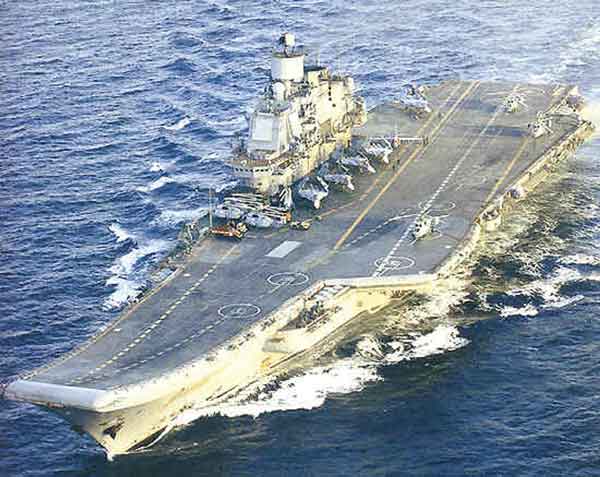
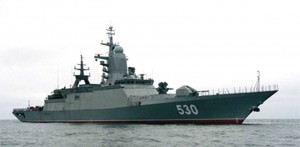
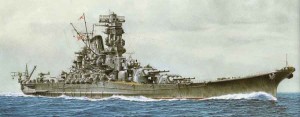
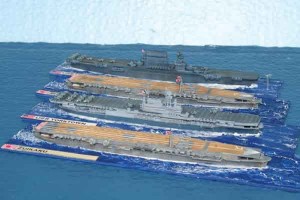
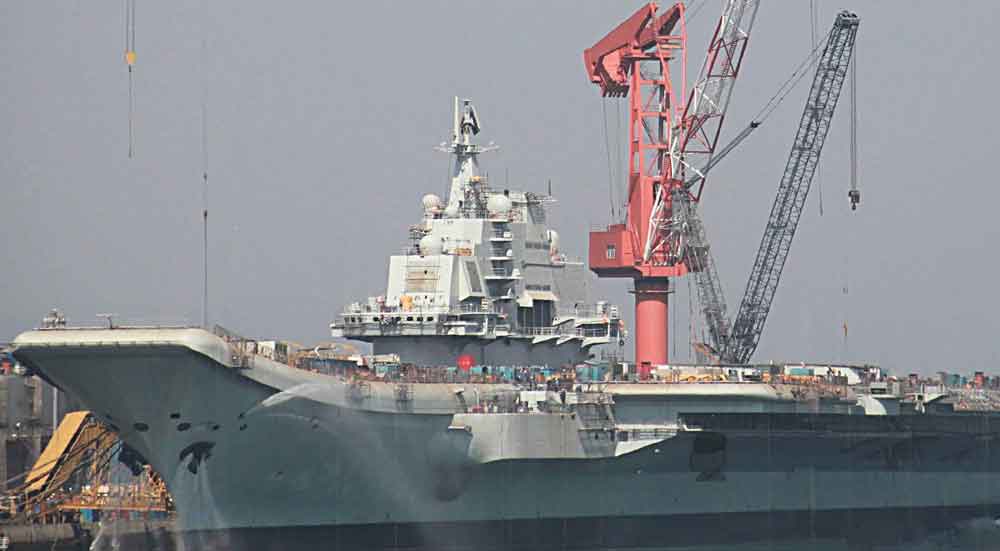

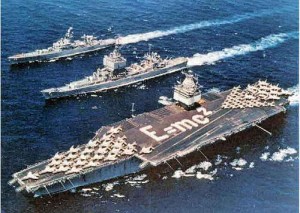
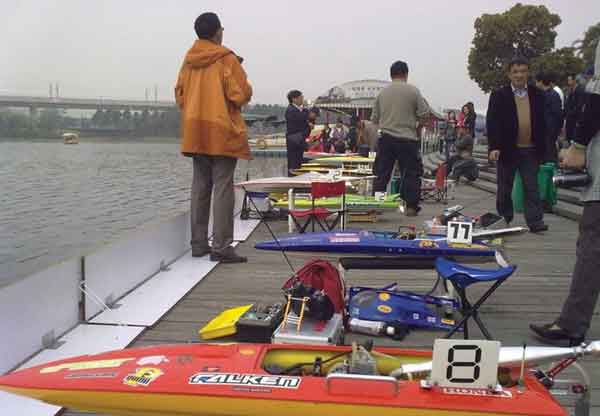

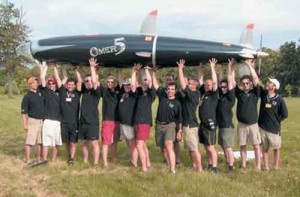

India has been languishing at level 3 for decades while our import dependence has been to the extent of 70% instead of being near zero as ought to be. Main reason is nexus & power of the arms lobby wields all over. There are many examples- for decades MBT Arjun had been at the receiving end of media campaign, successful production lines of a successfully indigenised rocket system was halted midway,local development of 155 mm guns was not allowed inspite of its production drawings being with us for two decades, Tatra way shows how it all works at every level. A nation which can put a ballistic miles on the dot 5000 km away surely can make ordinary bombs,tanks, trucks too provided there is more of pride & less of prejudice.
Now that we are realizing the worth of indigenous with economic slow down & corruption being a dirty word-hopefully we shall migrate to level 4 slowly but steadily.